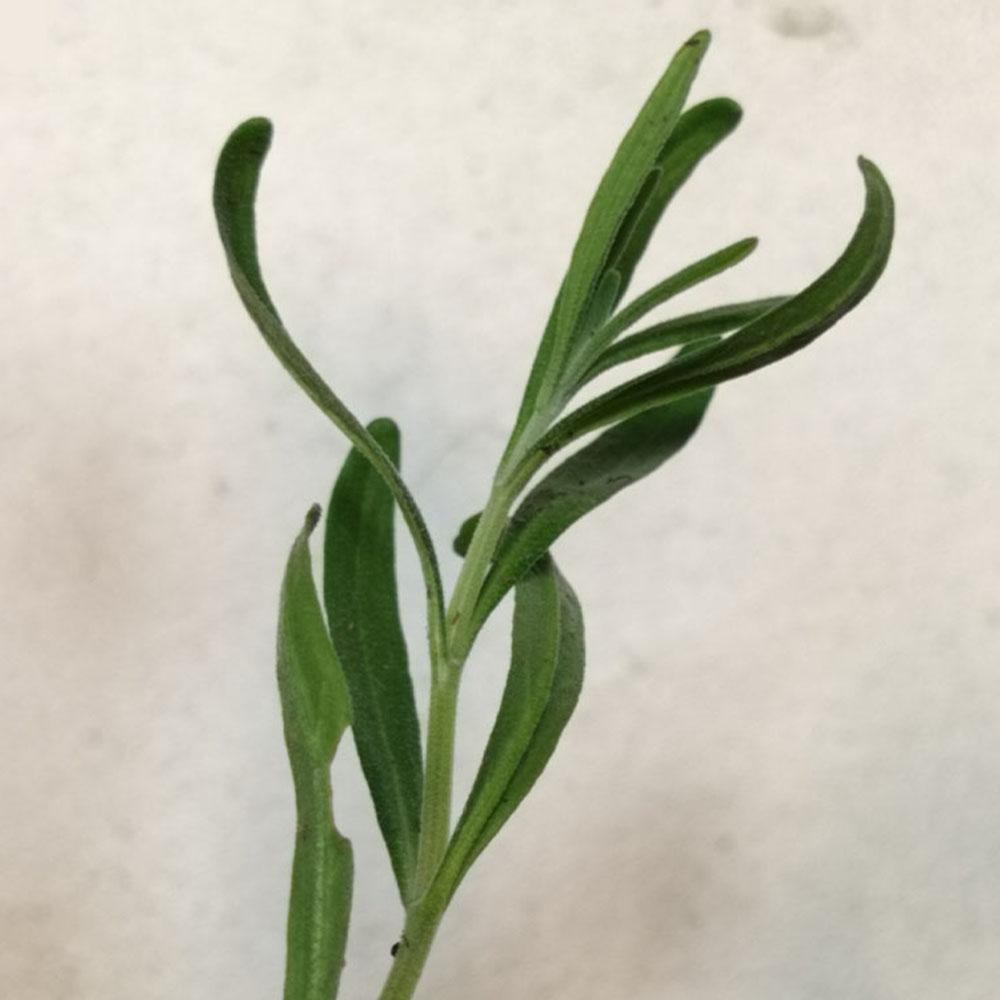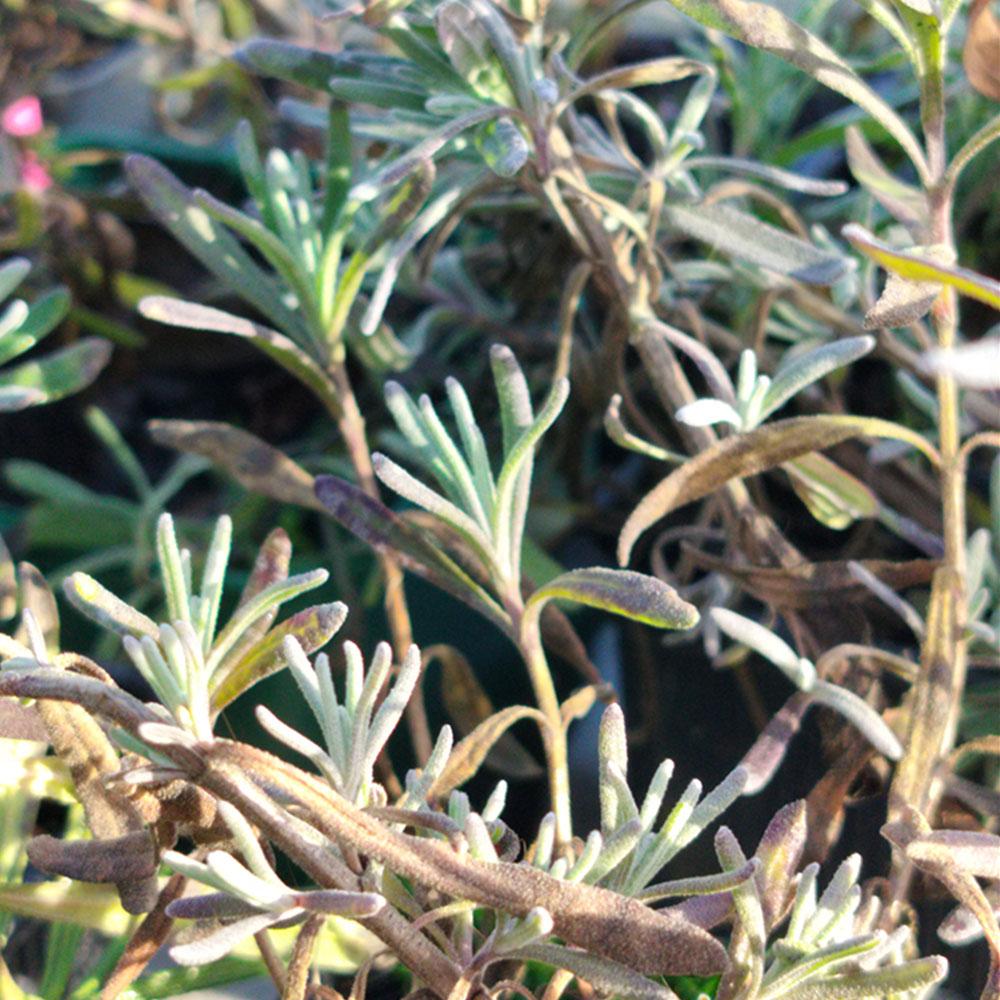No products in the cart.
Lavandula angustifolia
A highly aromatic, flowering perennial used for cooking in many cultures
Rated 0 out of 5
0 customer reviews4,90 € – 12,00 €Price range: 4,90 € through 12,00 €
Tags: aromatique, chaud, comestible, duveteux, evergreen, graphique, gris, longue floraison, perennial, plant, secheresse, soleil, vivace, xeriscaping
SKU: N/A
Category: Bees and Butterflies, Bouquet, Culinary, Distillations, Evergreen, Fragrant, Frost Hardy, Grey Ladies, Medicinal, Rewild

Lavandula angustifolia
4,90 € – 12,00 €Price range: 4,90 € through 12,00 €
Lavandula angustifolia, known as English lavendar, is a highly aromatic, drought resistant, hardy, flowering perennial used for cooking in many cultures.
This is the preferred lavendar for cooking as it is sweeter and floral, adding subtle character and depth to sweet and savory dishes alike.
The leaves are tomentose (fuzzy), fragrant and grey, bringing a softness to a garden and a fragrance that smells of sun and peace.
The soft purple flowers that appear throughout the summer are synonymous with Mediterranean gardens and summer bouquets.
👨🌾GARDENING TIPS👨🌾: Lavandula angustifolia
- Lavender does not enjoy the frost or having soggy roots – think about increasing drainage by adding inorganic mulch (such as clay beads or gravel) to your soil mixture.
- Trim back when it gets too leggy
COOKING TIPS:
The Tales & The Botany: Lavandula angustifolia
Lavender essential oil, when diluted with a carrier oil, is commonly used as a relaxant with massage therapy.
And you will have seen both the petals and the oil in handmade soap – it has historically been the most popular ingredient since the dawn of soap.
The flower was first recorded by Greek botanist Pedanius Dioscorides as the name στοιχάς stoikhas, originating on the Stoechades Islands,
Other Names
Lavender
English lavender (though it is not at all native to England)
Narrow-leaved lavender
Origin
Spain, France, Italy, Croatia
Similaire
| Weight | 0,5 kg |
|---|---|
| Container Size | 9×9 cm, 1L, 2L |
| Flowering | July, August |
| Flower Color | 🟣 Purple |
| Soil | Dry, Sandy, Rocky/Well-Draining |
| Exposure | Full Sun |
| Frost Tolerance | -15°C to -20°C |
| Size | 0.6m H x 0.6m W |
Reviews
0
Rated 0 out of 5
0 customer reviews5
0
4
0
3
0
2
0
1
0
Only logged in customers who have purchased this product may leave a review.
Related Products
Salvia sclarea – Clary Sage
A fuzzy perennial that is largely grown for its essential oil.
A fuzzy perennial that is largely grown for its essential oil.
Rated 0 out of 5
Cerastium tomentosum var. columnae
A grey-green spreading ground cover from the mountains.
A grey-green spreading ground cover from the mountains.
Rated 0 out of 5
Helichrysum italicum
An evergrey, fragrant perennial that will bring a distinctly Mediterranean atmosphere.
An evergrey, fragrant perennial that will bring a distinctly Mediterranean atmosphere.
Rated 0 out of 5
Aegopodium podagraria ‘Variegata’
A popular light, green and white groundcover.
A popular light, green and white groundcover.
Rated 0 out of 5
Sedum spectabile Septemberglut
A species of flowering plant in the stonecrop family – drought tolerant, with vibrant pink flowers and a spectacularly long flowering period.
A species of flowering plant in the stonecrop family – drought tolerant, with vibrant pink flowers and a spectacularly long flowering period.
Rated 0 out of 5
Euphorbia myrsinites
Known for its draping form of silver-gray foliage and radiant blooms.
Known for its draping form of silver-gray foliage and radiant blooms.
Rated 0 out of 5
Jacobaea maritima
A wooly white perennial plant from the Mediterranean region.
A wooly white perennial plant from the Mediterranean region.
Rated 0 out of 5
Salvia officinalis
A fragrant herb used in many cultures for cooking and deserts.
A fragrant herb used in many cultures for cooking and deserts.
Rated 0 out of 5
Koeleria glauca Blue Sprite
An ornamental, low growing blue grass
An ornamental, low growing blue grass
Rated 0 out of 5
Nepeta x faassenii
Catnip is known for its grey-green, aromatic foliage and masses of lavender blue flowers.
Catnip is known for its grey-green, aromatic foliage and masses of lavender blue flowers.
Rated 0 out of 5
Mertensia maritima
A deciduous perennial with fleshy, blue-grey-green leaves that naturally thrives on the wind and sea swept coasts
A deciduous perennial with fleshy, blue-grey-green leaves that naturally thrives on the wind and sea swept coasts
Rated 0 out of 5
Artemisia abrotanum
A highly fragrant, medicinal and striking grey-green bush.
A highly fragrant, medicinal and striking grey-green bush.
Rated 0 out of 5
Helichrysum orientale
A perennial with soft, ash gray foliage and yellow button flowers
A perennial with soft, ash gray foliage and yellow button flowers
Rated 0 out of 5
Stachys byzantina
Silky white-grey leaves and tall striking flowers
Silky white-grey leaves and tall striking flowers
Rated 0 out of 5
Stipa tenuifolia
A species of long, blonde, feathery grass.
A species of long, blonde, feathery grass.
Rated 0 out of 5
Artemisia alba subsp camphorata
A highly fragrant, grey-green bush.
A highly fragrant, grey-green bush.
Rated 0 out of 5
Potentilla anserina
A distinctly silvery, silky and lacy perennial.
A distinctly silvery, silky and lacy perennial.
Rated 0 out of 5
Artemisia Valerie Finnis
A semi-evergreen, aromatic variation on the theme of Artemisia.
A semi-evergreen, aromatic variation on the theme of Artemisia.
Rated 0 out of 5
recent view product
Hedera helix Erecta
An unusual stately candelabra ivy
An unusual stately candelabra ivy
Rated 0 out of 5
Tanacetum densum subsp amani
A shrublet composed of soft, finely divided silvery gray-white leaves.
A shrublet composed of soft, finely divided silvery gray-white leaves.
Rated 0 out of 5
Carex oshmensis Everest
A perennial grass loved for high arching, green and cream leaves
A perennial grass loved for high arching, green and cream leaves
Rated 0 out of 5
Allium senescens subsp. montanum
Mountain garlic with pink pompom flowers
Mountain garlic with pink pompom flowers
Rated 0 out of 5
Thymus camphoratus
An upright shrub with white velvet leaves and an aroma of camphor and summer.
An upright shrub with white velvet leaves and an aroma of camphor and summer.
Rated 0 out of 5
















































There are no reviews yet.